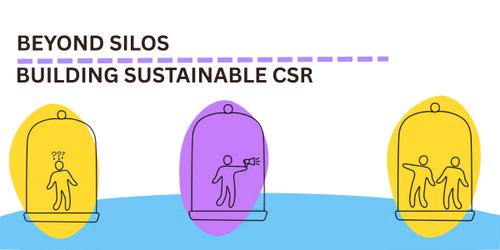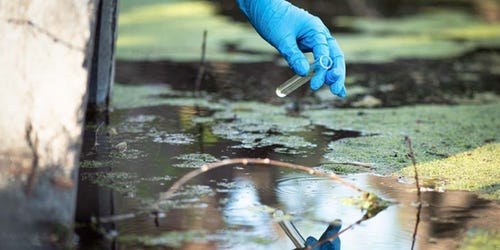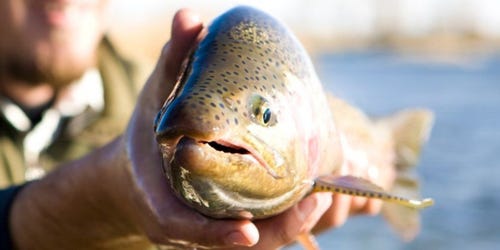Beyond Silos: Weaving Food Security, Ecosystems, and Biodiversity into Sustainable CSR | The Impact Pos
Issue # 54 | Wed, 2 Jul 2025
Dear NuSocia Patrons,
Welcome to this edition of the Impact Post! As wicked problems become increasingly complex, it's clear that the solutions lie not in isolated efforts but in understanding and leveraging the intricate connections between seemingly disparate issues.
This month, we delve into the vital intersection of food security, ecosystem maintenance, and biodiversity, a nexus often overlooked in its holistic importance, yet profoundly relevant to the efficacy and impact of Corporate Social Responsibility (CSR).
In this edition we you will find multiple articles in the domain of Sustainability, Gender and Public health, which use compelling live examples to illuminate the pitfalls of siloed thinking and its far-reaching consequences. Following these cases, we provide practical frameworks, tools, and techniques designed to foster integrated approaches and overcome the limitations of isolated perspectives.
We also bring you a case study of one of our clients that showcases the impact of reintroducing sometimes forgotten cultural practices and exemplifies a powerful testament to the "butterfly effect" achieved through an intersectional approach.
Join us as we explore these crucial connections, offering insights and frameworks to help you craft lasting and positive change through your initiatives.
Restoring Ecosystems, Restoring Hope: The Promise of Lake Rejuvenation in India
As India confronts water scarcity and environmental degradation, lake rejuvenation has emerged as one of the crucial solutions. Healthy lakes are essential biodiversity hotspots. NuSocia's evaluation of recent initiatives highlight how some of them significantly enhanced biodiversity, groundwater recharge, soil health, and diversified livelihoods, proving the profound socio-ecological benefits of integrated approaches. However, not all efforts succeed.
Uncover the dos and don’ts of lake rejuvenation projects and a tool to ensure that your next project avoid these common pitfalls.
Changing Marine Life and Its Impact on Health:
A Case Study from the Gulf of Oman
Discover how shifting marine biodiversity in the Gulf of Oman poses a critical, often underestimated, threat to public health across India and its neighbors, extending far beyond environmental concerns to impact food security, mental well-being in coastal communities, and regional economic stability.
This insightful article from our Public Health COE also explores the significance of real-time marine monitoring, sustainable aquaculture and collaborative data-sharing platforms, to foster marine health and build a resilient blue economy.
The Climate-Poverty Nexus: A Compounding Crisis for Women in Agrifood Systems
This compelling article from our Gender Center of Excellence explains how climate change acts as a "threat multiplier," disproportionately harming rural poor women, intensifying existing inequalities, and severely undermining their food security and livelihoods.
This piece also reveals how innovations without careful gender analysis can ironically increase poverty among the most vulnerable women.
Discover key questions and approaches that help identify and address "gender blindness" in program design.
Rooted Resilience: Traditional Farming Practices as a Path to Food Security
Despite India's escalating challenges of climate volatility, severe hunger, and limited on-ground adoption of climate-resilient millets, a quiet, profound transformation is unfolding in Akole Block of Maharashtra. This case study from NuSocia highlights a flagship CSR project by a leading Asset and Wealth management company where a nuanced blend of traditional and modern agricultural practices has successfully empowered tribal communities to reclaim their heritage.
Biodiversity Pulse
Your RESOURCE CENTER
Find all your needs to get involved in biodiversity
Empathy Driven Practices
As scientific understanding progresses, particularly regarding aquatic species, our empathy and responsibility towards them should evolve. A recent study has shed light on the intense pain fish can experience during common fishing practices, revealing that species like the rainbow trout can suffer for up to 22 minutes when left in open air or ice-cold water. Although these methods are often used for their ease and low cost in mass fishing, this new scientific ability to measure and quantify such suffering should inform and improve practices in farming, animal husbandry, and fishing. Aquatic animals have historically been treated differently from mammals in these contexts, but our methods should now evolve to reflect our growing knowledge and commitment to animal welfare.
Sustainability: Wildlife is Part of The Solution
"What is coexistence? How animals and people can thrive together"? This article by the IFAW highlights that wildlife is a crucial element in ensuring the health of both our planet and ourselves. It emphasizes that it’s not only about planting trees, but, creatures like whales and elephants also play a significant role in carbon sequestration. Coexistence with wildlife is not just about their survival, but about creating balance and ensuring that as humanity grows, we actively strive to maintain this natural equilibrium. The article details how wild animals contribute significantly to fighting climate change, improve livelihoods, enhance human well-being, preserve cultural heritage, and inspire scientific advancements.
Click the link to learn more about how wildlife is the key to the fight against climate change.









